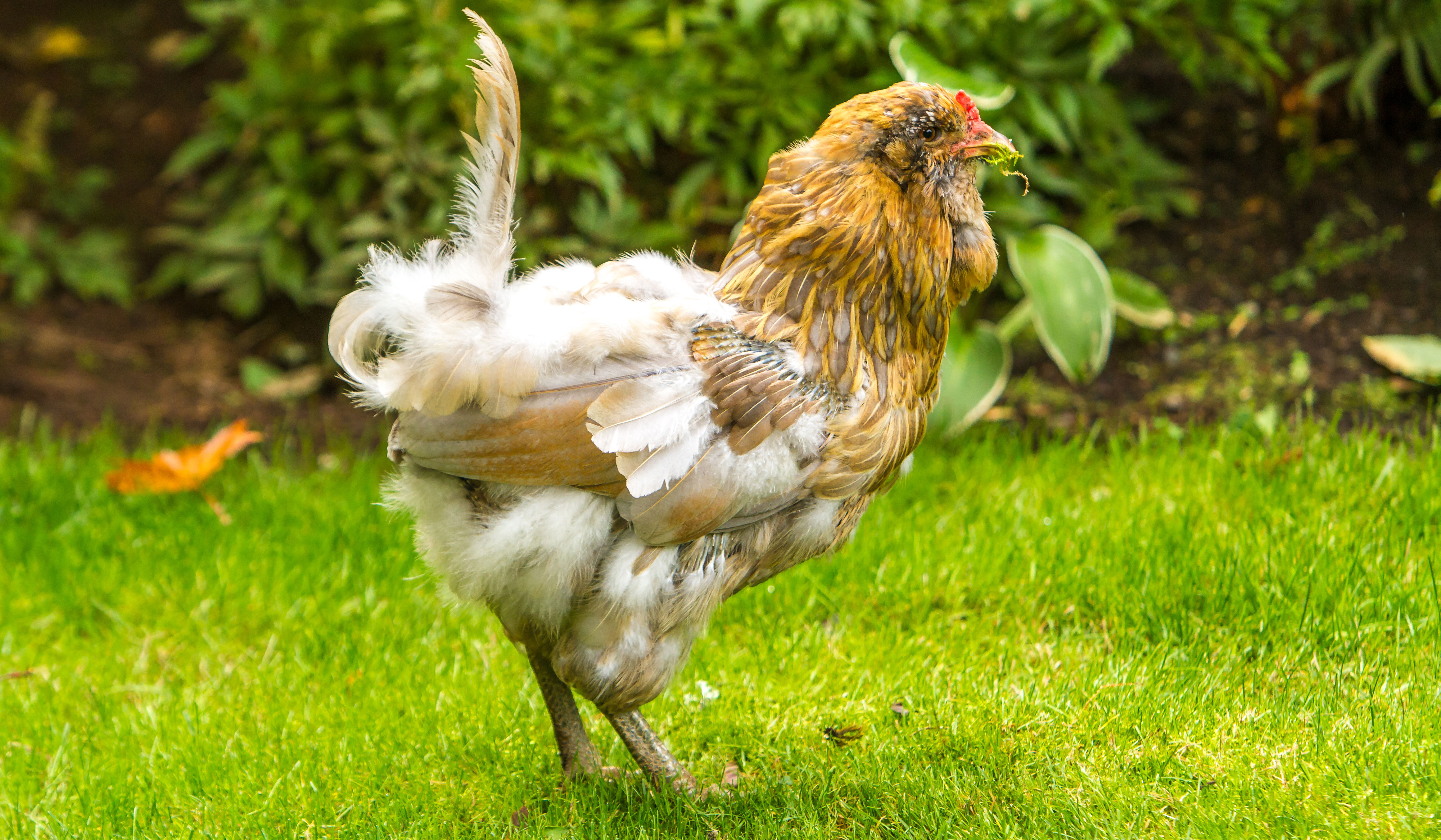Birds won’t look their prettiest during a molt, but it’s a natural behavior that’s necessary for the health of your chickens. Molting is when chickens replace older, worn feathers with new feathers. All birds have a timer in their head that tells them when they should take a break, quit laying, and change their feathers. For most birds, the timing for a molt comes when natural day length starts decreasing. During the molt, birds will eat less feed and usually stop laying. The molt is important because it gives the reproductive tract time to rejuvenate, which will help the health of your birds and quality of their eggs. There are 2 ways to manage a molt: inducing a molt or letting birds molt naturally. The biggest difference between the 2 ways is the length of molting. An induced molt will last only 45 days while a natural molt can last 3 months or more.
If you’re wanting to induce a molt, it’s best to have a plan. Planning a molt for your flock includes managing feed and housing to help your birds through their molt. I would suggest trying to manage your flocks molt to start as day length shortens. This is more natural for the birds as birds will often naturally molt toward the end of August as days start to shorten. If you’re adding supplemental light to your birds, you can manipulate the lighting to induce the molt later in the year, October 23rd is a good aim. Why October 23rd? It is 60 days for the winter solstice of December 22nd. This is when the days start getting longer. This schedule will take advantage of naturally occurring increasing daylight. Easier on your flock and you!
Feed
One way to induce a molt is to withhold feed for 24 hours. Once your birds have started molting, you’ll need to change their feeding program. The goal of the molt is to decrease body weight by an average of 20% (no more than 25%) before putting birds back on layer feed. Changing the feed from a layer feed to a molt ration with high fiber, high calcium, low energy feed will help birds lose weight and restore calcium levels in their body. High fiber, low energy is key because fiber digests slowly and makes birds feel full longer. A molt feed should be limited to 2-3 oz per bird per day. You will need enough feeder space for all birds to eat at the same time because bird will be more irritable during a molt. New feather growth can be uncomfortable for a molt, making the birds more irritable and more likely to peck each other if there’s competition for feed.
Lighting
The ability to control and/or supplement lighting will greatly help for inducing a molt. Expose hens to 24 hours of light per day for 7 days before switching from the layer feed to the molt feed. Then decrease the day length to 8-10 hours and switch to the molt ration. The key to lighting is to bring them below 12 hours and hold them during the molt. Then at the end of the molt, gradually increase lights by 30 minutes per week. Not more, not less. You can stimulate light up to 16 – 17 hours.
A few quick bullet points:
- The second lay cycle is usually 80% of the first cycle.
- The goal is to decrease body weight by an average of 20% (no more than 25%) before restarting birds. So, monitoring body weight before and during the molt is very important. Don’t cut corners. Weigh birds before molting, then once a week until birds reach the targeted weight. A molting ration helps reach this weight.
- Molting rebuilds body systems and replenishes calcium and xanthophylls (the yellow for yolks) in the body. Alfalfa meal is a major source of xanthophylls.
- Molting is very uncomfortable for birds because their feathers are regrowing, so try your best not to hold, play with, or stress your chickens during this period.
